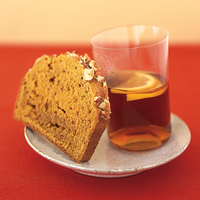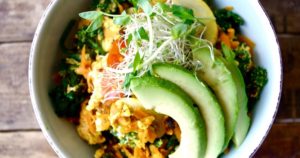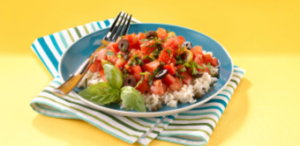
Ingredients
3 tablespoon oil, canola
3/4 cup pumpkin, puree or homemade
1/2 cup honey
3 tablespoon sugar, brown (packed)
2 egg lightly beaten
1 cup flour, whole-wheat (whole-meal)
1/2 cup flour, all-purpose (plain)
2 tablespoon flax seeds
1/2 teaspoon baking powder
1/2 teaspoon allspice, ground
1/2 teaspoon cinnamon, ground
1/2 teaspoon nutmeg, ground
1/4 teaspoon cloves, ground
1/4 teaspoon salt
2 tablespoon nuts, hazelnuts, chopped
Instructions
Preheat the oven to 350 F. Lightly coat an 8-by-4-inch loaf pan with cooking spray.
Sodium: 80mg
Carbohydrates: 28g
Dietary Fiber: 3g
Protein: 4g




 When ordering food at a restaurant, do you know which items may be loaded with fat and calories? Unlike when you’re grocery shopping, the foods in a restaurant may not have nutrition labels listing their fat grams and calorie content.
When ordering food at a restaurant, do you know which items may be loaded with fat and calories? Unlike when you’re grocery shopping, the foods in a restaurant may not have nutrition labels listing their fat grams and calorie content.



 Your goal is to fill half your plate with fruits and vegetables whenever possible. Aim for a whole rainbow of colors, including dark green, red, orange, purple and white. Variety is vital to get all the different nutrients and their health benefits.
Your goal is to fill half your plate with fruits and vegetables whenever possible. Aim for a whole rainbow of colors, including dark green, red, orange, purple and white. Variety is vital to get all the different nutrients and their health benefits.
